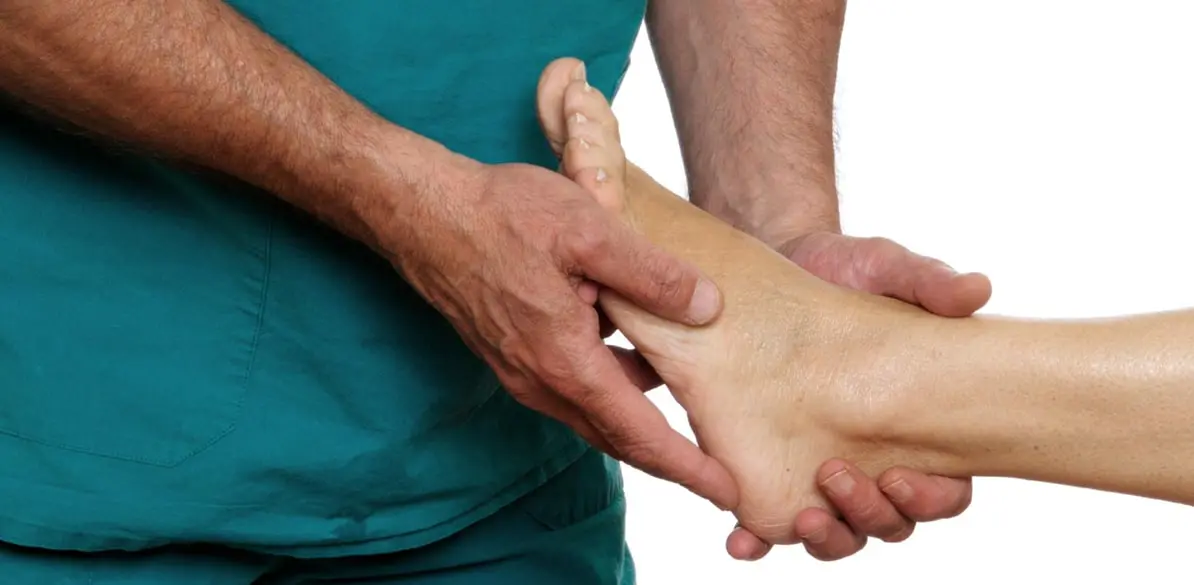Foot: osteonecrosis, disorders of the sesamoids, bone tumors, osteoarticular infections, gout, and its influence on driving

Osteonecrosis
It is clinically associated with mechanical pain, though it is sometimes a finding, when a lump is discovered on the back of the foot related to destruction of the joint area of the metatarsal with the phalanx
Although the starting treatment is rest, standing and gait disturbances are managed with palliative orthopedic insoles.
Köhler’s disease of the navicular usually does not leave sequels in the adult age.
Freiberg’s disease of the second metatarsal is usually managed with adaptation insoles and surgery, that usually keeps the patient far from driving for near one month.
Sever’s disease or posterior apophysitis of the calcaneum can occur in the adult, as a sequel of the surgical correction carried out in childhood, in which some part of the calcaneum migrated into the Achilles tendon.
Tips
- Patients with no symptoms can drive, if the specialist permits it, since in many cases for the clinical improvement, foot rest is required that includes not pressing car pedals.
- The surgical treatment of each case requires a subsequent functional recovery and safety period, when the patient cannot drive until the specialists gives a favorable report for it.
Sesamoid disorders
The glenosesamoid complex, made up of both sesamoids and the soft tissues involved in the first metatarsophalangeal joint, can by the basis of multiple conditions.
They can cause metatarsalgia focalized in this area with pain relief gait over the external edge of the foot, heloma under the first metatarsal head, swelling, or fistula.
The treatment includes rest, physiotherapy, area discharge insole, and surgery, and as it is an area of the foot essential for driving, the driver will be advised based on the disability that may cause pain.
- Sesamoid disorders from injuries require mainly rest of the area; accordingly, driving cannot be performed without protective insole and thick-sole footwear, in the event the patient can drive.
- Traumatic injuries of the sesamoids are very painful and disabling for driving, though sometimes they are radiological findings associated with the hallux, and will not be symptomatic.
- Sesamoid fractures very rare, only if some part should be removed the patient could not drive for two weeks, and rest will be adjusted to the limitation involved by therapy
- Microcrystalline arthropathies due to hyperuricemia or chondrocalcinosis, inflammatory and neurodystrophic ones can also occur in the sesamoids.
Tips
- All sesamoid disorders include an area of the foot which is essential to drive; therefore, given the disability that may be caused by pain and the therapeutic needs in terms of rest and immobilization, the physician will advise against driving when he considers it necessary, and until symptomatic recovery with adequate support of the area in the pedals.
Bone tumors
Primary bone tumors of the foot are very rare.
Tips
- Osteoid osteoma affects only men, and is associated with permanent pain that increases at night. Surgical exeresis solves it, preventing the patient from driving for at least three weeks.
- Aneurysmatic cyst is solved with surgery through filling, that forces to be several weeks without driving.
- Malignant bone neoplasms require exeresis surgery, in many cases requiring amputations, with the attendant car adaptations to be able to drive.
- In general, the patient cannot drive with pain of tumoral origin in the foot.
- The specialist will indicate in his report the recommendations to drive after surgery, and the definitive sequels that will permit adapting the car to recover freedom for driving as soon as possible.
Osteoarticular foot infections
They are frequent and include arthritis, osteomyelitis, osteitis, and synovitis.
They are caused by local injuries, infections transmitted by blood or iatrogenesis.
Tips
- General and local signs are added to the functional disability of the foot, preventing these patients from driving while they are treated.
- The treatment involves, in some cases, surgical cleaning followed by antibiotic therapy for six weeks, with rest and without driving, until the specialist indicates it.
Gouty foot
Acute gout attacks are usually located in the toe, appear at night with local inflammation, and last not more than ten days.
The toe is usually shortened and hypertrophied.
Tophuses are occur in any foot area, and complicate footwearing and mobility when they are located in a joint, and can fistulized with highly disabling joint destruction.
Tips
- The acute condition usually prevents from driving while the patient is treated due to the pain caused in the foot.
- When surgical cleaning of the area is carried out, the time without driving ranges between one and two months, depending on the techniques used and the progression of the patient.
- The specialist will advise against driving in acute episodes and during the post-operative recovery period, and indicate the time to cure when the patient can drive safely.
